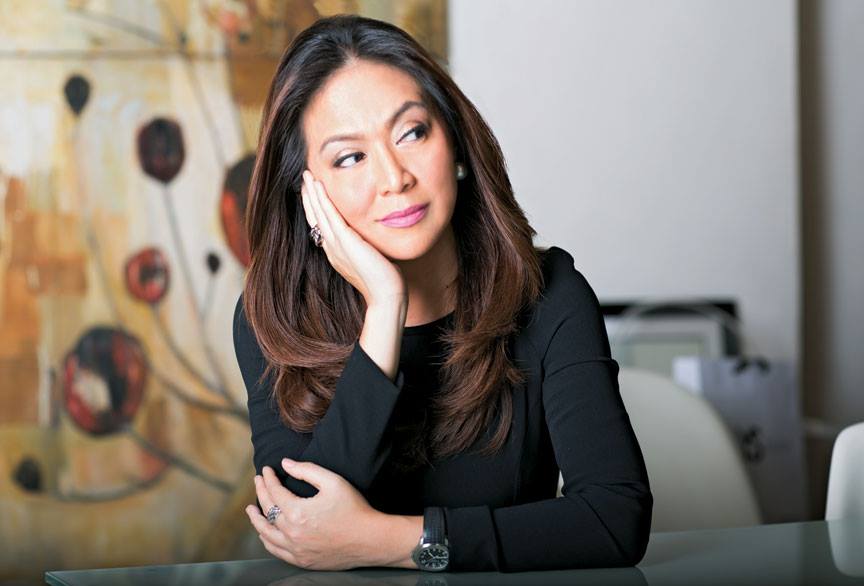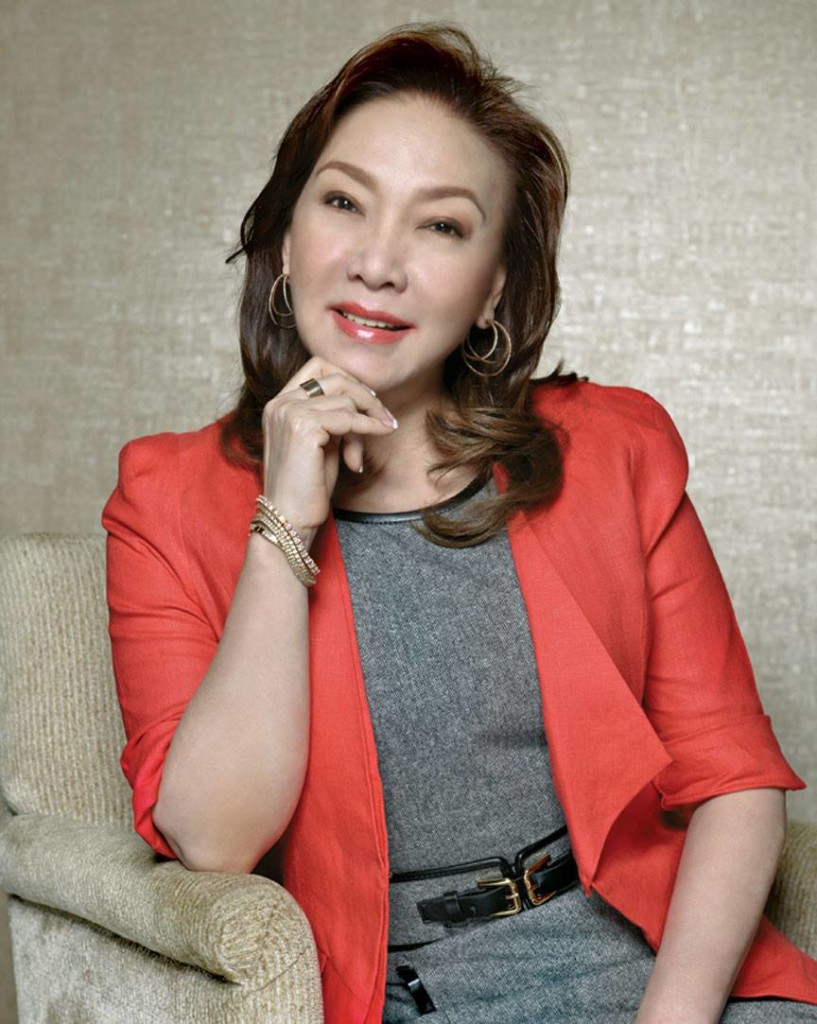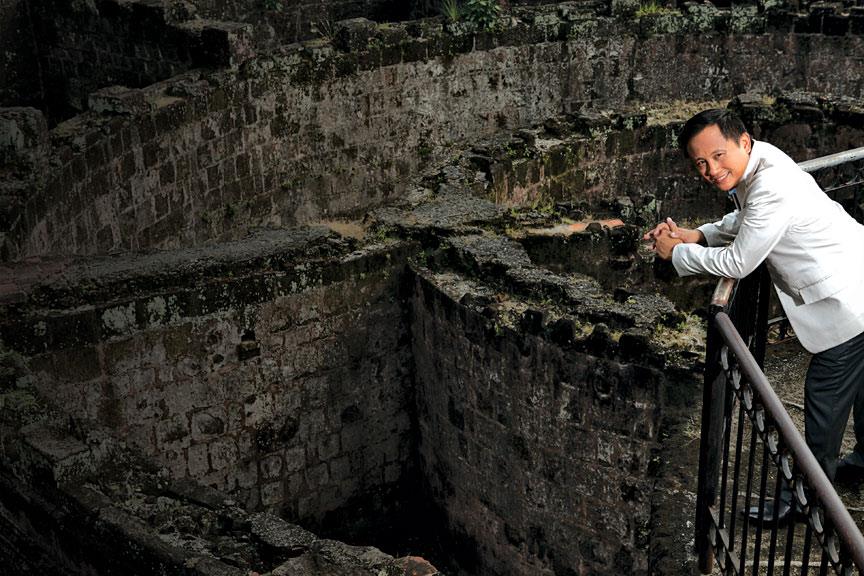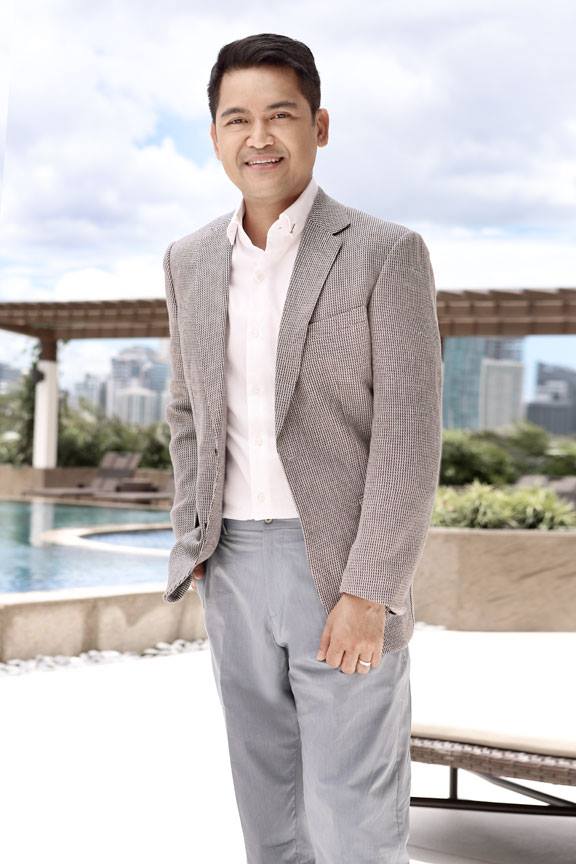May 3 is world press freedom day. Across the planet, journalists, news writers, reporters, photographers, news anchors and other members of the press day in and day out reveal hard truths about the most pressing issues, oftentimes putting themselves in danger just to get to the truest of truths the world needs to know. Indeed, the world would be a very different (and perhaps much darker) place without brave voices like theirs.
PeopleAsia honors the country’s most esteemed journalists by sharing their stories today.
Mel Tiangco: Heart on Fire
From ABS-CBN 2’s TV Patrol to GMA 7’s Frontpage, 24 Oras, Magpakailanman, Powerhouse and and innumerable TV appearances and shows, there was/is Mel Tiangco.
Sans the stylized nightly wardrobe, the TV hair, makeup and the studio klieg lights, Mel also happens to be the executive vice president and chief operating officer of the GMA Kapuso Foundation. Needless to say, the title is no laughing matter, entailing well-spent time, patience, extra effort and careful attention.
Televiewers usually see her in various outreach missions and projects, most especially in severely affected provincial areas struck by nature’s calamities and similar tragedies. Just as the floodwaters subside, she would be back on the road, perhaps aboard a 10-wheeler Army truck or airborne in a chopper, distributing additional relief goods to far-flung communities. Then again, she may be off to yet another sojourn, establishing the groundwork for a barangay medical center or an elementary public school, lugging the academic supplies and needs of impoverished students.
This position she holds and treasures dearly; too dearly, in fact, that she leaves no stone unturned in fulfilling her job description.
“I really love my job in the Foundation. This is something that I’ve enjoyed doing for decades. I do all these out of love — for the work, for my company and for my people. It’s really true that all these come from my heart. Just plain and simple love, sheer love,†she firmly attests. The position does not bring any financial rewards at all, and this Mel takes in stride, with a pleasant disposition and a brighter perspective.
“I am simply giving back what God has given me in very generous terms. I think we should always have that in our hearts — to give back what we have received, or at the very least, in gratitude for what we have. It’s the only way that you can show appreciation for all of these blessings that you have received in your life.
“It’s not enough just to say, ‘Thank you, Lord.’ No, you have to give back. That’s just one of the fulfillments that I get out of this occupation,†Mel states matter-of-factly.
She is quick to add that her work is also spiritually rewarding. For instance, just meeting a little child who comes to their GMA 7 office bringing along his savings in a piggy bank and saying, “I want to donate this to that sick child I saw on your TV program†is more than enough to warm the cockles of Mel’s heart, and everyone in the Kapuso Foundation for that matter.
“That, again, is fulfilling enough, besides the fact that you are giving back (to the Lord). When you also go to (depressed areas and calamity-stricken) places or attend to the sick and deprived, it also magnifies the blessings that you receive. And that (is what) we should really be thankful for,†this Leo-born lady attests.
The catchy tagline of her public service segment over in 24 Oras, indeed, vividly suits her to the hilt. She is, after all…“Mel Tiangco, ang Kapusong Totoo.â€
(By GREGGY V. VERA CRUZ |Â Photography by FRANK HOEFSMIT)
Howie Severino: The Lighter Side of Truth
“Recently, when I was going through my late grandfather’s photographs, I saw a picture of myself as a nine-year-old with my grandfather wearing a fedora. In my hand, I don’t know why, but I was holding a newspaper,†shares Howie Severino, multi-awarded journalist. “I don’t know if I was holding it because I was going to read it, or if I was holding it for someone else, but I’d like to think that at that young age, I was already interested in news,†he says.
Although discouraged from watching too much TV, Howie would find his fame on the same screen — first as a reporter for the Probe Team and then as producer/writer/host of GMA 7’s pioneering documentary show, i-Witness. “I realized that TV is a very powerful medium for telling stories and educating the public,†he explains. “That was basically why I was interested in television. I look at myself as some kind of a public explainer, with my job being an extension of my passions as a teacher,†says Howie, who had a short stint teaching fourth year students at Ateneo de Manila High School.
During the Marcos dictatorship, Howie founded the anti-Marcos group called Mandigma! The trying times found him charged with sedition and he was incarcerated for eight days at the Philippine Army’s main camp in Fort Bonifacio. But not even the steely bars of prison were able to put out the fire in his belly, especially the one fueled by his pursuit of truth. Although it did open his eyes to other stories — those set outside the tumultuous political arena.
Howie soon co-founded The Philippine Center for Investigative Journalism (PCIJ) in 1989 with eight other prominent journalists including Rigoberto Tiglao and Sheila Coronel. It was there that he made his mark as an environmental journalist. When asked why he decided to traverse the softer, more subdued path of a journalist — choosing lifestyle/human interest stories over hard news — Howie responds: “There is a lot of interesting stuff in the world. A compelling story doesn’t have to be a story wrought with danger.â€
Unlike many other journalists, Howie also doesn’t shy away from his fears. For him, being brave and looking for trouble are two very different things. “I’ve never been invited to interview an Abu Sayyaf member. It would probably be interesting, but even given the opportunity, I prefer to stay away from that. I’d prefer not to put myself in a situation where I can get killed,†he laughs, pointing out that the Philippines still remains to be one of the most dangerous places for journalists.
From documenting a rare tribal burial ritual in the North (which convinced Cheche Lazaro to hire him for The Probe Team) to living under the railroad tracks in Pandacan, Manila (which won him second prize in an international broadcast competition sponsored by the United Nations in 2007), Howie’s love for stories has taken him on many adventures.
(By KRISTEL DACUMOS – LAGORZA | Photography by DIX PEREZ)
Karen Davila: Journalist on a Mission
Eighteen years in the broadcast industry did not change how Kristin Karen Lising Davila, better known as ANC Headstart and Bandila news anchor Karen Davila, acts. There are no diva demands, no reports of condescension. She largely remains simple and friendly to everyone she interacts with. As veteran journalist Maria Ressa, also Karen’s former superior at ABS-CBN, put it in her endorsement of Karen to the World Economic Forum (WEF), “I think what stands out about her is something which may seem to go against the traits of a good journalist: innocence.â€
It is this innocence, according to Ressa, “that gives her the ability to give everyone — regardless of who they are — a fair hearing.†This observation is reflective of Davila’s lessons from her years in the broadcast scene.
“Compassion, I’ve realized through the years, is the most valuable. It allows you to see a story or an event in a different perspective. This work taught me that the world is my classroom and that my opinion isn’t always the right one. There are more than two sides to a story, but in the end there is only one truth,†she says.
For a woman whose original dream was to be a fashion designer, Karen has come a long way in her broadcasting career.
Her profession may have begun at GMA 7 in 1993, but it was her move to ABS-CBN in 2000 that propelled her to continued success and growth. With the innumerable stories she has told over the years, she admits there are some that have personally affected her.
“I love the stories that involved children, or have made me travel and learn about a new culture or a remote place. My documentary Children in Jail (Batang Preso), remains closest to my heart because it’s heart wrenching to see many kids in jail for petty crimes. What’s sad is, even if the law has been passed, cities did not allot funding for rehabilitative community detentions for them,†Karen shares.
The Batang Preso documentary won the grand prize at the UNICEF Child Right’s Award, beating more than 50 foreign documentaries. It has also been instrumental in the signing of the Comprehensive Juvenile Justice Law, which now prevents minors from being jailed.
Apart from putting heart in her stories to touch people’s lives, Karen uses her celebrity and influence for advocacy work like Habitat For Humanity. Karen is also a generous supporter of World Vision, an organization that champions education for children. She started out by giving a monthly monetary donation and became a serious advocate by supporting the cause in her shows.
“I’m proud of World Vision because they are the real deal! They really send Filipino kids, the poorest of the poor, to school,†says Karen.
In 2010, Karen was named a “Young Global Leader†by the World Economic Forum (WEF), an international organization that awards young professionals, between the ages of 30 and 40, who have made a difference in their field of expertise and can influence people on a global platform.
She’s also an active Twitter user. “I love communicating — it’s what I do whether as a journalist or as an advocate for causes. I support them on Twitter. People have asked me if I’ve hired people to Facebook or tweet for me and the answer to that is ‘No!’ I am a connector,†she says.
As a Twitter enthusiast, with over 780,000 followers to boot, making her one of the local influencers, she learned something valuable while dealing with this brand of new media. “Self-control. It’s so tempting to fight with someone online but I don’t.â€
“We are all agents of change. I do it through my stories, opinions and discussions on radio and interviews I do. Even on Twitter. I believe that when people are better informed, they make better choices and that’s my contribution to making a better Philippines,†she adds.
(By GRACE DIEZ | Photography by KENJI O)
Jiggy Manicad: King of Breaking News
A reed-thin young man took the bus from San Pablo, Laguna one early morning in 1995 and got off at EDSA to apply for a reporter’s job at GMA-7 in Quezon City. Upon reaching the gates of one of the biggest TV networks in the country, the guards on duty instructed him to line up at the Kapwa Ko, Mahal Ko, which was the network’s program for indigents. He explained that he was not looking for medical assistance but for a job. The guards, scrutinizing his build, did not believe him so he endured three hours in the line, in the company of people coughing in chorus, just so he could enter the premises of the TV network.
Had Rodrigo “Jiggy†Manicad Jr.,then 40, decided to back out from his dream to become a TV reporter that day, he would not have been the country’s “King of Breaking News†now. Looking back to that day some 20 years ago, Jiggy smiles at how far he has come, reporting about crime stories, wars and conflicts around the world, insurgency and extremism in Mindanao, disasters, illegal arms trade and drug mules.
“Truth is, I was accepted by GMA7 in 1994 as a driver/production assistant for DZBB. I resigned after a few months because I was a promdi (from the province) who was not familiar with the streets of Metro Manila. Nag-resign ako bago pa ako maputukan ng istorya (I resigned even before I failed on a story),†recalls Jiggy with a be-dimpled smile.
His first ever breaking story was the Kuratong Baleleng rubout case in 1995. He had only been with GMA-7 News and Current Affairs for a few months when he broke the story on television. That was the break that earned for Jiggy the confidence of his colleagues. The thin man, after all, had a stout heart, a critical mind and an indomitable spirit that could see clearly and report insightfully, even at the sight of dead people piled up in a jeepney.
Among Filipino broadcast journalists, Jiggy was also the first to break the story on Super Typhoon Yolanda when it struck Tacloban in 2013. he story of P02 Chris Lalan, the “lone survivor†of the Mamasapano encounter, was also first reported on TV by Jiggy. “I shot the video after he was rescued from the encounter site,†he says.
He also broke the news on the Zamboanga siege in 2012, reporting live amidst mortar attacks. For that, he won a gold at the New York Film and Video Festival.
Jiggy’s list of awards seems endless. “But I don’t work for awards. I work because I want some voices to be heard, some stories to be seen. I want people to see and find out for themselves the things that happen in our country, around the world,†says Jiggy who was also the first Pinoy to broadcast live from the basecamp of Mt. Everest.
“Journalism is hard work. It is not for fame or glamour or porma (impressions). It’s about good stories. It’s about telling good stories,†says Jiggy who gives back to the community with his Jiggy Manicad TV Lectures, which he launched in his native San Pablo City in Laguna about three years ago.
(By BÃœM D. TENORIO JR. | Photography by MAU AGUASIN)









